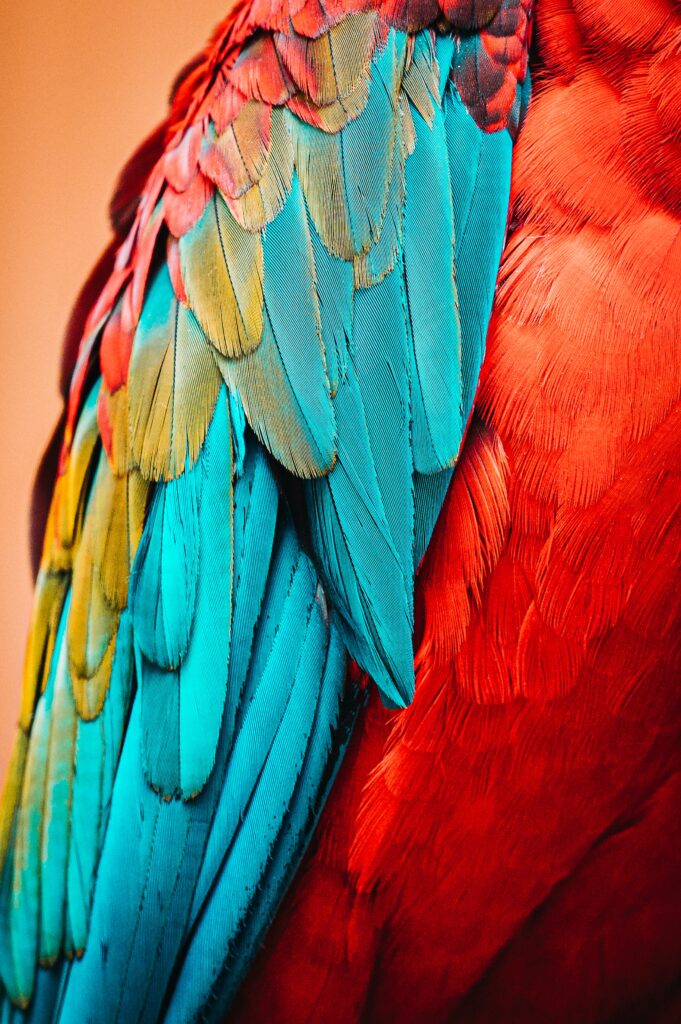The first time our daughter drew a monster, it was a blue crayon oval with a spiky triangular head, long stick-figure arms, and dozens of red eyes. It tore through the front door and barreled into the kitchen. It sliced open my forearm. You grabbed various kitchen knives and plunged them into its amorphous, brightly colored body. The monster screeched and fell over, smashing half our cabinets in the process.
The next time was at daycare. We came to pick up our daughter, and she proudly handed us a finger-painted monster with a flaming maw and spindly tentacles. Look what I made today! she said. The creature’s fiery breath melted a trunk full of plastic toys, and its tentacle arms ensnared several children. We cracked the Break Glass in Case of Fire box hanging on the wall. You silenced the monster’s flaming shrieks with several blasts from the fire extinguisher. I lopped off its arms and head with the fire ax.
We tried to explain the danger to our daughter, but she didn’t understand. Week after week, she’d hand pieces of paper to us, and we’d tremble in fear. I’d remark It’s beautiful honey. What’s it supposed to be? while you snuck off to get a baseball bat or nail-gun from the garage. We became regulars at the hospital, new monster wounds tore across old sutures, a zigzag of scabs and pus and scar tissue. The drawings grew larger and more difficult to defeat.
We hid our daughter’s crayons and paints, but she was resourceful. She drew acid-spitting monsters on the side of the house using mud. She pilfered lipstick and drew a winged gargoyle-like monster on the bathroom mirror. She even drew a four-headed monster on the side of our dusty car, just beneath where some teen had written Wash Me. You almost lost a limb in the gargoyle battle, and the four-headed monster claimed my left ear.
We took our daughter to a developmental psychologist. The psychologist said we couldn’t and shouldn’t stop her from drawing. Instead, we needed to set firm guidelines and redirect her artwork toward more appropriate subjects. Have you considered princesses? the psychologist asked.
We gave back all our daughter’s confiscated art supplies. We explained all the new rules and bought princess-themed coloring books to ease the process along. Whenever we caught her drawing creatures with fangs and claws and hooves, we made her sit in time-out or took away dessert. We also used reinforcement techniques recommended by nosey Facebook friends, heaping praise and gifts for every drawing of some pink frilly thing.
Our daughter complied, but she didn’t seem happy. Every now and then, she’d mutter something like Princesses are boring. We’d scold her and then insist Princesses are fun!, but I think we both knew better. They did seem kind of boring. These paint-and-crayon princesses just sat in our living room. They occasionally giggled or waved handkerchiefs, but they rarely did much else. Typically, after a few days they’d get rescued by some random prince. He’d bust through the door, knock over a houseplant or two, then whisk her away. It was disruptive, but the prince was harmless compared to the monsters.
Eventually, our daughter’s princess drawings became even more lifeless. They devolved into pink shapes with little form or definition. And it seemed as if our daughter was somehow becoming less defined too. From the right angle, she was semi-transparent, almost ghost-like. When she stopped drawing altogether, we knew something was very wrong. She just sat motionless in her room, like a princess waiting for something to happen.
We took her back to the developmental psychologist who said Have you tried ballerinas? I’ve had great success with ballerinas. We gave our daughter some ballerina coloring books. She tossed them aside and went to bed right after dinner. That night, we had a long talk about our options, and we knew what we needed to do.
We strung razor-wire around our house and piled sandbags in the living room. I loaded shotgun shells and sharpened machetes. You laid out dozens of shiny new art supplies and a copy of the Dungeons & Dragons Monster Manual. Our daughter paged through the Monster Manual and smiled at the harpies and hobgoblins and lycanthropes and ogres. You opened an oversized sketchpad, placed it in front of our daughter, and said Go ahead, sweetie. Draw whatever you want.
—
James R. Gapinski is the author of Fruit Rot (Etchings Press, 2020), Edge of the Known Bus Line (Etchings Press, 2018), and Messiah Tortoise (Red Bird Chapbooks, 2018). He teaches for Southern New Hampshire University’s MFA program, and he’s managing editor of The Conium Review. Find him online at jamesrgapinski.com or on Twitter @jamesrgapinski
Photography by: Jan Kopřiva
